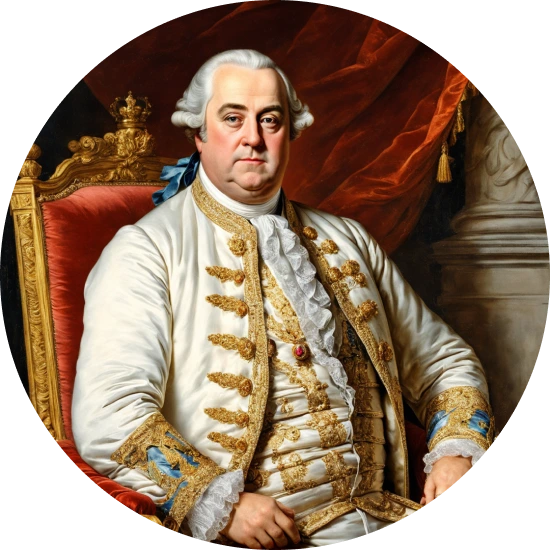Explore the Family Name Nader
How common is the last name Nader in the United States?
According to the data collected in the Decennial U.S. Census, the surname Nader saw an increase in popularity between 2000 and 2010. In 2000, Nader was ranked as the 12,343rd most popular surname in the United States. By 2010, it had risen to the 11,168th position, marking a 9.52% increase in rank. The total count of individuals with the surname also increased during this time period from 2,309 to 2,833, representing a growth of 22.69%. Furthermore, the proportion of individuals with the surname Nader per 100,000 residents grew by 11.63%.
| 2000 | 2010 | Change | |
|---|---|---|---|
| Rank | #12,343 | #11,168 | 9.52% |
| Count | 2,309 | 2,833 | 22.69% |
| Proportion per 100k | 0.86 | 0.96 | 11.63% |
Race and Ethnicity of people with the last name Nader
The ethnic identity associated with the surname Nader has also seen changes over the decade as reported by the Decennial U.S. Census. In 2000, the majority of individuals with the surname identified as White (87.57%). However, by 2010, while still the majority, the percentage had decreased slightly to 83.30%. Meanwhile, the percentage of individuals identifying as Hispanic rose from 6.37% to 8.33%, and those identifying as Black also saw a significant jump from 1.43% to 3.07%. There was a small decline in the percentage of people identifying as two or more races, from 3.72% to 3.42%. The data for Asian/Pacific Islander and American Indian/Alaskan Native categories were suppressed for privacy reasons.
| 2000 | 2010 | Change | |
|---|---|---|---|
| White | 87.57% | 83.3% | -4.88% |
| Hispanic | 6.37% | 8.33% | 30.77% |
| Two or More Races | 3.72% | 3.42% | -8.06% |
| Black | 1.43% | 3.07% | 114.69% |
| Asian/Pacific Islander | 0.91% | 0% | 0% |
| American Indian and Alaskan Native | 0% | 0% | 0% |
Nader ancestry composition
23andMe computes an ancestry breakdown for each customer. People may have ancestry from just one population or they may have ancestry from several populations. The most commonly-observed ancestry found in people with the surname Nader is Levantine, which comprises 31.4% of all ancestry found in people with the surname. The next two most common ancestries are British & Irish (19.0%) and French & German (13.4%). Additional ancestries include Spanish & Portuguese, Iranian, Caucasian & Mesopotamian, Eastern European, Italian, and Indigenous American.
Ready to learn more about your ancestry? Get the most comprehensive ancestry breakdown on the market by taking our DNA test. Shop 23andMe
| ANCESTRY BREAKDOWN | COMPOSITION |
|---|---|
| Levantine | 31.4% |
| British & Irish | 19.0% |
| French & German | 13.4% |
| Other | 36.1% |

Possible origins of the surname Nader
Your DNA provides clues about where your recent ancestors may have lived. Having many distant relatives in the same location suggests that you may all share common ancestry there. Locations with many distant relatives can also be places where people have migrated recently, such as large cities. If a large number of individuals who share your surname have distant relatives in a specific area, it could indicate a connection between your surname and that location, stemming from either recent ancestral ties or migration.
Based on 23andMe data, people with last name Nader have recent ancestry locations spanning a few countries, mostly in Lebanon, and the United Kingdom of Great Britain and Northern Ireland.
| RECENT ANCESTRY Location | Percentage |
|---|---|
| Beirut Governorate, Lebanon | 49.50% |
| North Governorate, Lebanon | 49.50% |
| South Governorate, Lebanon | 49.50% |
| Beqaa Governorate, Lebanon | 49.50% |
| Mount Lebanon Governorate, Lebanon | 49.50% |
What Nader haplogroups can tell you
Haplogroups are genetic population groups that share a common ancestor on either your paternal or maternal line. These paternal and maternal haplogroups shed light on your genetic ancestry and help tell the story of your family.
The top paternal haplogroup of people with the surname Nader is R-M405, which is predominantly found among people with European ancestry. Haplogroup R-M405 is descended from haplogroup R-M343. Other common haplogroups include E-L29 and J-M410, which are predominantly found among people with European and European ancestry. Other surnames with similar common haplogroups are: Bennett, Simon, Gibbs, Miller, Freeman, Schulte, Warner, Berger, Schwartz, Atkinson.
The most common maternal haplogroups of people with Nader surname are: H1, U2_3_4_7_8_9, H. These most commonly trace back to individuals of European ancestry.
 Paternal Haplogroup Origins R-M343
Paternal Haplogroup Origins R-M343
Your paternal lineage may be linked to King Louis XVI
The rule of France by men of the House of Bourbon began with King Henri IV in 1589 C.E. and continued until the beheading of his direct paternal descendant King Louis XVI in 1793. Several years ago, researchers analyzed a mummified head and a blood-soaked cloth that they believed might belong to the two kings, and concluded that the royal paternal line belonged to haplogroup G. In a more recent study, however, a different set of researchers tested three living men who are direct descendants of the Bourbon kings. Their efforts revealed that the male lineage of the House of Bourbon is actually a branch of haplogroup R-M405.
Your maternal lineage may be linked to Marie Antoinette
Because it is so dominant in the general European population, haplogroup H also appears quite frequently in the continent's royal houses. Marie Antoinette, an Austrian Hapsburg who married into the French royal family, inherited the haplogroup from her maternal ancestors. So did Prince Philip, Duke of Edinburgh, whose recorded genealogy traces his female line to Bavaria. Scientists also discovered that famed 16th century astronomer Nicolaus Copernicus traced his maternal lineages to haplogroup H.

What do people with the surname Nader have in common?
Spoiler alert: it's complicated. People with the same last name are usually no more genetically similar than a randomly sampled group of people from the same population. That said, people with the same surname are more likely to have similar ancestries than randomly sampled individuals. The reason is the tendency of people with similar cultural or geographical backgrounds to preferentially mate with one another. That's why people who share a surname may be more likely to share traits and tendencies in common than people within the general population. Check out the percentages below to see the prevalences of tastes, habits, and traits of people with your surname compared with prevalences among 23andMe users.
Preferences
Traits
Habits
Wellness

Migraine
A severe headache characterized by intense pain, sensitivity to light and sound, and often accompanied by nausea and vomiting.
"Nader" Surname 12.2%
23andMe Users 16.4%
Are health conditions linked to the last name Nader?
The short answer is that, if there is an association between surname and health, it's usually more about your ancestry than your name. Individuals with a given surname are no more genetically similar than the general population but often have similar ancestries. The populations of people associated with those shared ancestries often have sets of genetic variations, also known as alleles, in common. Some of those alleles are associated with a greater likelihood of developing certain diseases.
Disease variant frequency by ancestry
Disease allele frequencies in populations associated with the surname Nader are shown below. Important Note: not everyone with a disease allele will develop these health condition









